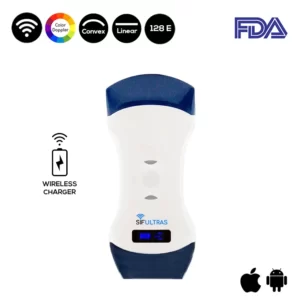Diagnosing Pneumonia Through Ultrasound
Pneumonia is an illness that causes the air sacs in one or both lungs to become inflamed. The air sacs may become clogged with fluid or pus (purulent material), resulting in a cough with phlegm or pus, fever, chills, and trouble breathing.
The severity of pneumonia can range from minor to life-threatening. It is especially dangerous for newborns and young children, persons over the age of 65, and those who have health issues or compromised immune systems.
Many germs can cause pneumonia. The most common are bacteria and viruses in the air we breathe. Your body usually prevents these germs from infecting your lungs. But sometimes these germs can overpower your immune system, even if your health is generally good.
The signs and symptoms of pneumonia vary from mild to severe, depending on factors such as the type of germ causing the infection, and your age and overall health. Mild signs and symptoms often are similar to those of a cold or flu, but they last longer.
Signs and symptoms of pneumonia may include:
· Chest pain when you breathe or cough
· Confusion or changes in mental awareness (in adults age 65 and older)
· Cough, which may produce phlegm
· Fatigue
· Fever, sweating and shaking chills
· Lower than normal body temperature (in adults older than age 65 and people with weak immune systems)
· Nausea, vomiting or diarrhea
· Shortness of breath
There are several methods for diagnosing such a problem, but ultrasound scanning was shown to be one of the most accurate. Lung ultrasound (LUS) is a non-ionizing radiation technology that is practicable, portable, and easy to learn. It has emerged as an emerging diagnostic tool for identifying pneumonia in adults and children in recent decades, with outstanding sensitivity and specificity.
A highly professional instrument is required to do this lung examination flawlessly. In this instance, a high-resolution Color Double Head Wireless Ultrasound Scanner SIFULTRAS-5.42 FDA could be the best option.
This innovative color wireless ultrasound scanner has two heads, thus, making it more practical and more affordable than buying two separate single-headed probes.
The convex side of the color doppler transducer is used for in-depth examinations of the internal parts of the body like the lungs and so it is convenient for examining the Pneumonia issue.
In fact, the Ultrasound Probe SIFULTRAS-5.42 is specifically designed for pulmonologists to produce colored lung images and transfer them into their and their patients’ phones or tablet screen so that both parts will be well aware of the gravity of the issue and be able to discuss the best treatment option in complete transparency.
Plus, the device is IOS and Android compatible. Small and light, easy to carry, and easy to operate. In other words, the SIFULTRAS-5.42 does not compensate for the colored image quality.
With all of these sophisticated features, the Convex and Linear Color Doppler wifi Double Head Ultrasound Scanner SIFULTRAS-5.42 should be the top choice for pulmonologists and Pneumonia patients, especially as it is primarily built to examine key internal organs such as the lung.
As such, patients need not be concerned because they will be presented with correct scan imaging, resulting in a safer and speedier examination. For Pneumonia patients, we strongly propose the FDA-approved Convex and Linear Color Doppler wireless Double Head Ultrasound Scanner SIFULTRAS-5.42.
Reference: air sacs inflammation
Disclaimer: Although the information we provide is used by different doctors and medical staff to perform their procedures and clinical applications, the information contained in this article is for consideration only. SIFSOF is not responsible neither for the misuse of the device nor for the wrong or random generalizability of the device in all clinical applications or procedures mentioned in our articles. Users must have the proper training and skills to perform the procedure with each ultrasound scanner device.
The products mentioned in this article are only for sale to medical staff (doctors, nurses, certified practitioners, etc.) or to private users assisted by or under the supervision of a medical professional.

